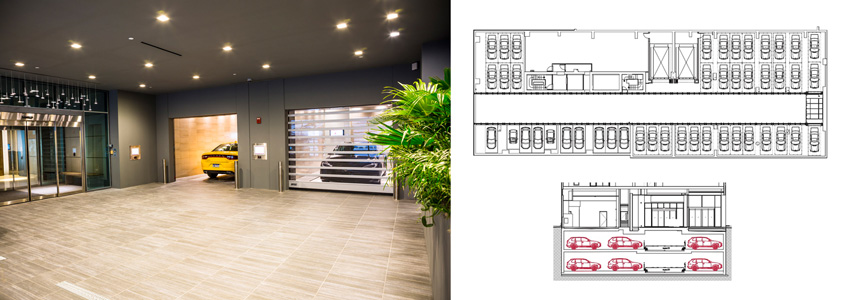Automated Parking Systems Demystified
Support Structure for Vehicles and Equipment
The support structure can be a concrete slab, a steel frame with a steel or composite deck, or a hybrid structure. The choice of structure type is project specific and dependent upon such factors as its location, other structural loads in the proximity of the APS, client preference, and code requirements.
Transfer Area
While not technically a piece of equipment, the transfer area is a necessary element of the system. Transfer areas are roughly the size of a single-car garage and designed to be aesthetically pleasing to ensure each user feels safe and welcome. The transfer area is equipped with sensors to ensure that the vehicles do not exceed the allowable dimensions or weight that can be safely stored, motion sensors providing additional safety for the users, a display screen to instruct the users where to position their vehicles and other pertinent information, and automated doors to allow vehicles to enter and leave the transfer area.

Because the transfer area is the only part of the system that users experience, creating a luxury, stylish transfer environment makes sense.
Turntable
Turntables rotate vehicles within the APS so that they are facing in an outward direction when leaving the APS. Turntables are generally located within the transfer areas but can also be in other areas of an APS.
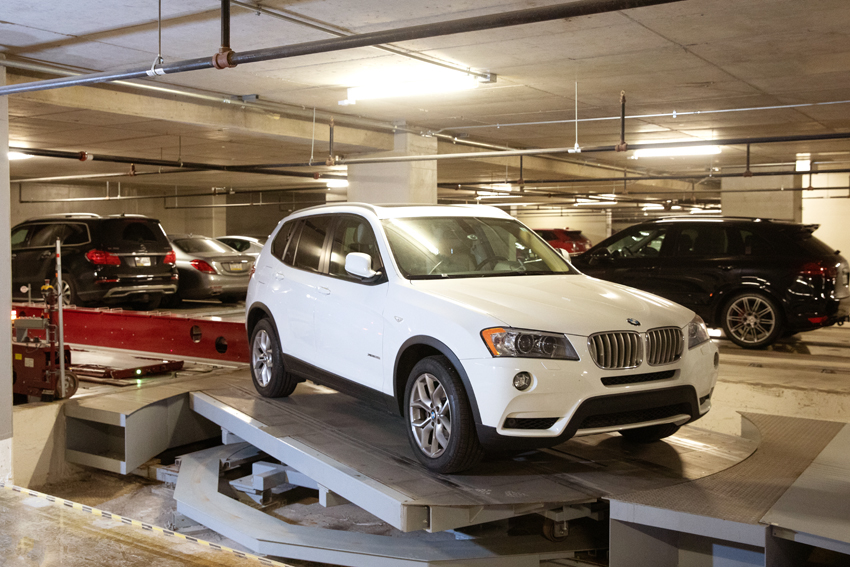
A turntable rotates a vehicle in an APS so it is facing in an outward direction when the user arrives for retrieval.
Transfer Car with Onboard Satellite
The transfer car (t-car) provides the horizontal movements within an APS. Its onboard satellite with clasp arms collects and deposits vehicles to and from the t-car directly onto a flat surface. There is no need for a pallet or car stand in every storage location. The satellite has two parts, which can move independent of one another, providing the ability to adjust its clamp arms to accept a wide variety of vehicle wheelbases.
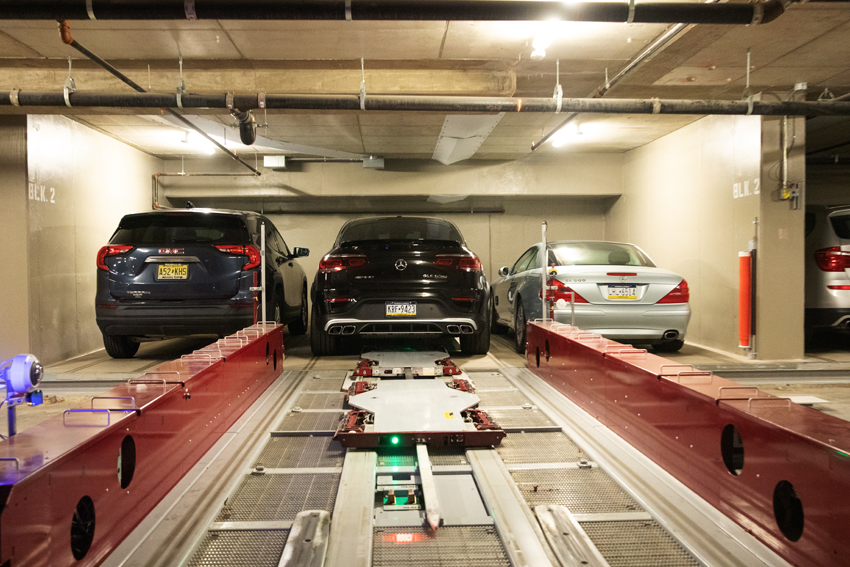
A vehicle is retrieved from its storage location and transported onto a transfer car.
Once a vehicle has been collected from a transfer area or lift, the t-car moves horizontally to position the vehicle in front of a designated storage position. Once the t-car is positioned, the vehicle is stored using the satellite, which drives into the storage lane and deposits the vehicle. There can be multiple vehicles stored in each storage lane, which can be located on both sides of the t-car aisle.
Architect Tip: Depending on the development type and throughput and redundancy requirements, a rough rule of thumb is 50 to 60 parking spaces per t-car.
Vehicle Lift
The vehicle lift(s) provides the vertical movement of all vehicles within the APS. There are two types of vehicle lift types: an end-of-aisle (EOA) lift and a side-of-aisle (SOA) lift.
EOA lifts are positioned at one or both ends of the t-car aisles and can move a t-car, with or without a vehicle, to any parking level within the APS. EOA lifts allow t-cars to move from level to level within the APS. A maximum of two EOA lifts can be used in an APS.
SOA lifts are positioned to the side of the t-car aisle and can also be located within a transfer area. SOA lifts only move vehicles between the different levels of an APS but never move t-cars.
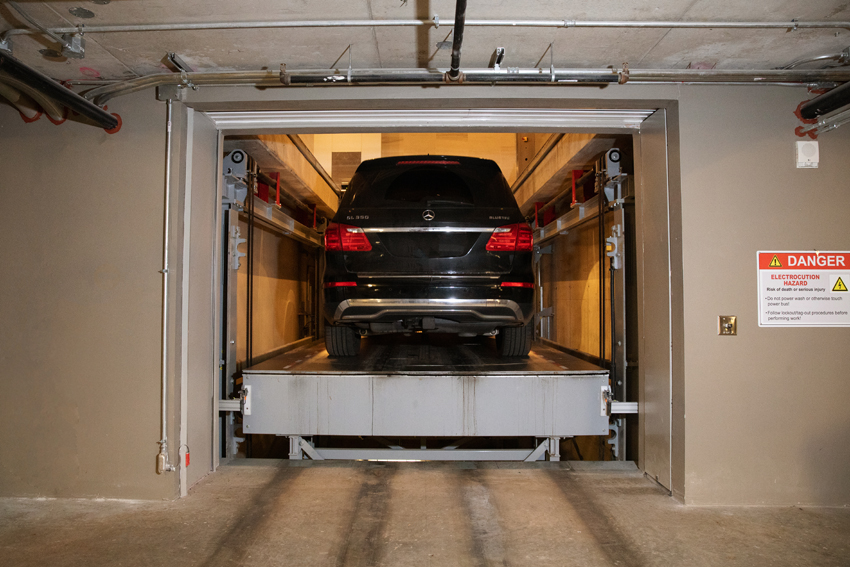
The vehicle lift moves the vehicle from the transfer area to its designated storage level.
Architect Tip: Often one EOA lift is fitted to an SOA lift APS to provide system redundancy.
SOA lift systems generally provide a higher throughput or speed than EOA lift systems, and t-cars generally operate only on designated parking levels.
Software Controls
These are comprised of:
- The programmable logic controller (PLC) or machine-control system, with associated software, that is responsible for turning on motors and receiving/interpreting signals from the sensing devices located on each piece of parking equipment.
- The parking controls system (PCS), a PC-based upper-level management software, is responsible for issuing instructions to the PLCs and other equipment and managing data, such as mission logs, occupancy levels, EV charging data, and user information. The PCS is typically stored locally on a server within the APS facility.
- The human machine interface (HMI) allows operators and maintenance technicians to interface with the machinery in automatic, semi-automatic, and manual modes and with users to confirm that their vehicles are authorized for storage within the APS. The HMI also gathers required EV charging information from users when applicable.
Electric Vehicle Charging System
The electric vehicle (EV) charging system allows an EV to be charged while it is being stored in the APS. The user indicates on the kiosk or app the level of charging required. An expertly designed APS is able to charge more vehicles with less charging infrastructure thanks to the nature of cycling vehicles to be charged via automation. This process will be discussed later in this course.
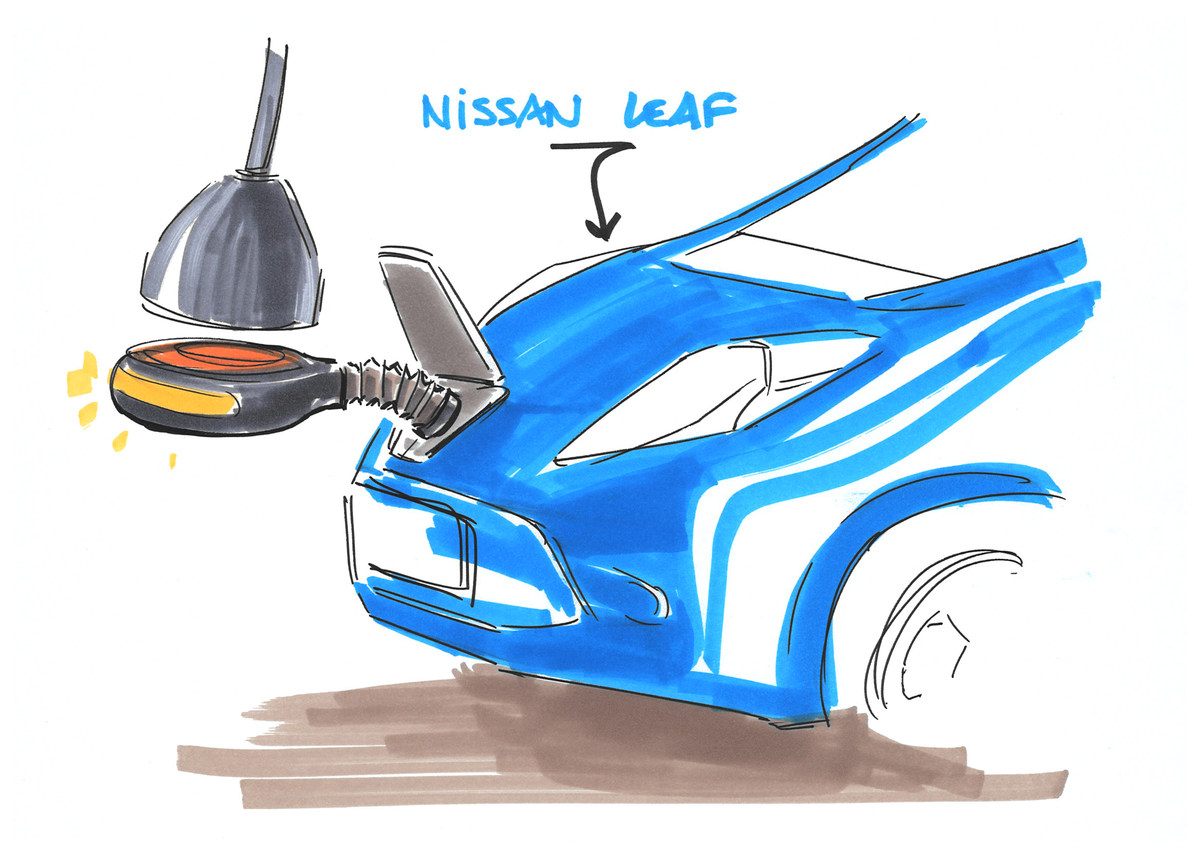
EV charging capabilities can be integrated into the automated parking system (APS) while still maintaining tight space constraints. The entire process is managed within the automated system’s PCS.
Who Operates an APS?
Using an APS is as easy as entering a single-car garage. Here is a typical scenario:
- After a driver arrives at the APS, he or she scans a fob or takes a ticket from a machine, which allows for entry into the transfer area.
- The driver exits the car and transfer area, then scans the fob/ticket at a kiosk/pay station, or uses an app for the transaction.
- After all questions on the kiosk or app are answered to ensure that the car is ready to be stored, the user is free to proceed on foot to a residence, office, shopping area, or other destination. Meanwhile, inside the system, the car is lowered or raised by a vehicle lift to the storage level. A proprietary satellite technology positions the vehicle onto a transfer car, which takes it to its parking spot.
- When the driver returns to the garage to retrieve the car, he or she scans the fob/ticket at the kiosk/pay station or uses an app and waits for the vehicle lift to retrieve the car and return it to the transfer area. The driver can then enter the car and drive out of the parking facility.
For day to day operations, no system personnel are needed on site to operate the APS.
Safety and Security
Concerns about personal safety, theft, vehicle vandalism, and vehicle damage are common with users of conventional parking garages. Navigating through a busy parking garage or parking lot is fraught with danger to both the vehicle and the driver walking to and from the vehicle. At night, these dangers increase.
Automated parking eliminates these hazards. Without the need to navigate through a garage to find a parking spot, the risk of an accident is eliminated. The inside of an automated parking facility is inaccessible to the public, so the vehicle itself is safe and secure from outside dangers while it is being stored. By eliminating the dangers associated with conventional parking garages, the parking experience becomes essentially worry free.





